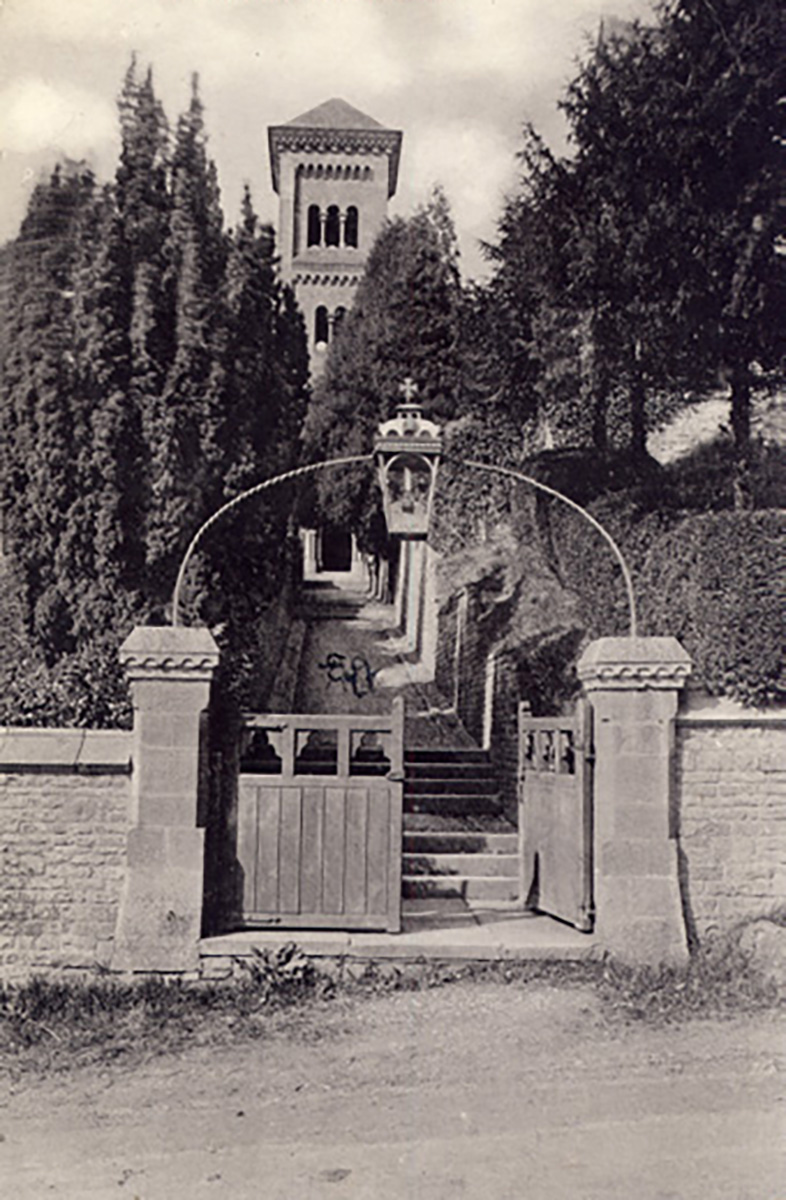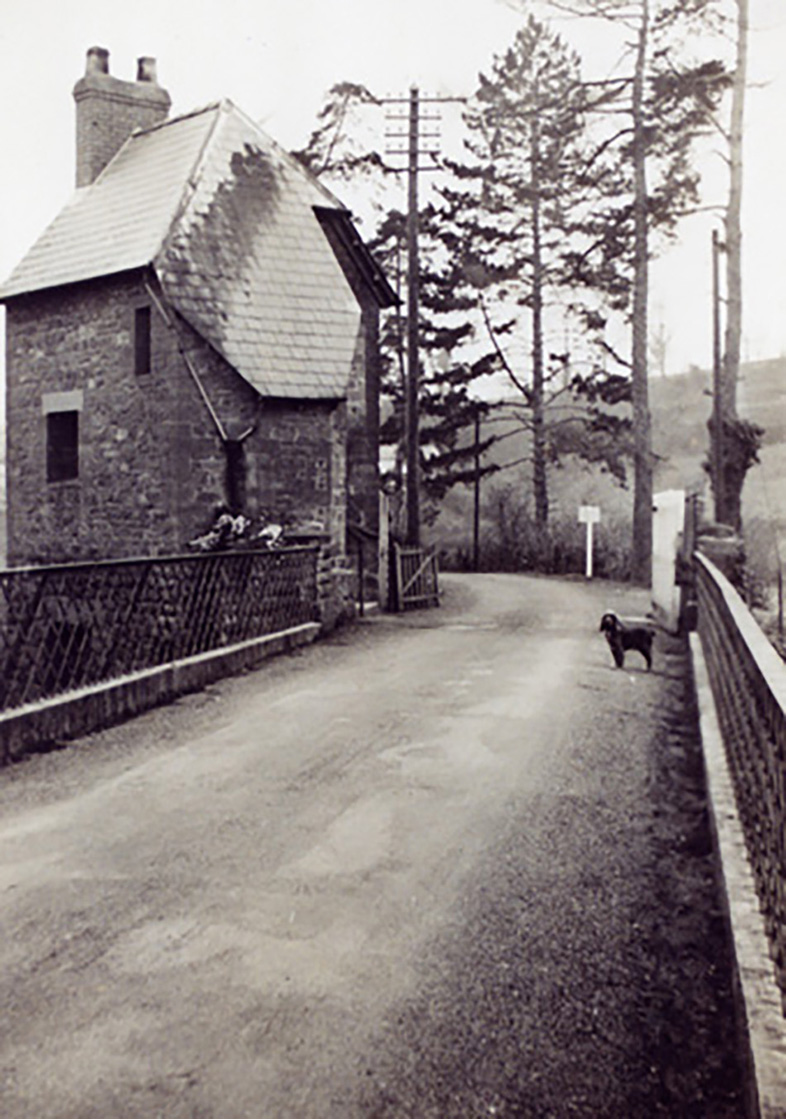
St Catherine's, Hoarwithy
Hoarwithy is in the parish of Hentland and by the 19th century was the largest settlement in the parish. Hoarwithy, first recorded in 1275, developed into the main settlement in the parish. Much of the village has the appearance of having originated as a squatter settlement occupying steep slopes above the Wye not easily utilised for agriculture. In order to serve this community a new church was built on this site in 1843. The original church had no dedication and was simply known as the chapel of ease to Hentland and was a simple rectangular stone structure structure.
William Poole became vicar of Hentland with Hoarwithy in 1854. It was Poole who commissioned the architect John Pollard Seddon to rebuild the church at Hoarwithy, dedicated to St Catherine, in the 1870s.
Hoarwithy toll-bridge
In 1850 Hoarwithy was connected to King's Caple on the opposite, eastern, bank of the Wye by means of ferry, which had been recorded in 1347. This ferry, presumably for pedestrians, had been superceded by a horse ferry by 1581.
The Hereford Journal in 1861 carried a notice that the ferry was to be replace by a toll-bridge In 1871 the census records Ann Wilcox, a widow of 56, as the gatekeeper.
Almost every male over the age of fourteen in the parish is recorded as a farm labourer. Hoarwithy was the only village in the parish and home to a cluster of people who provided services to this dispersed agricultural community.
There was a village shop run by 72-year-old widow Katherine Jones, assisted by her 24-year-old granddaughter Elizabeth.
Frederick Cairns was the Hentland policeman. He lived in Hoarwithy with his wife Emma.